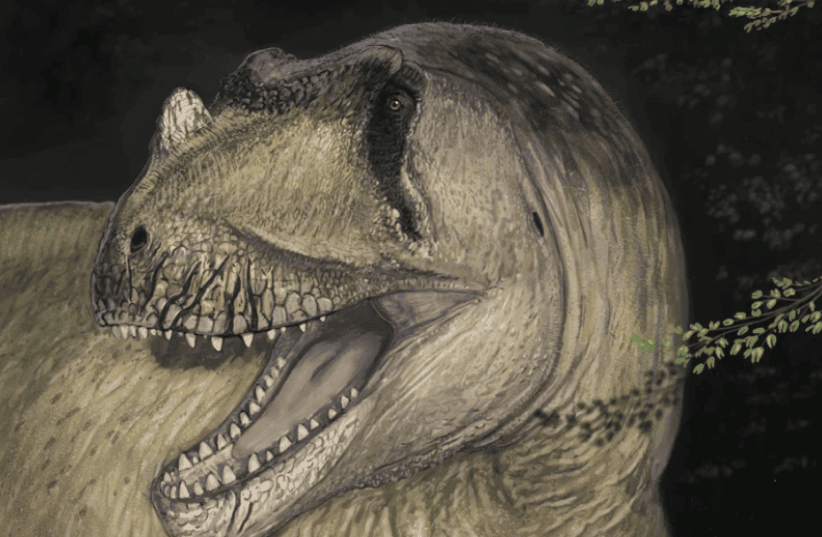For over a century, paleontologists have been unraveling Earth’s prehistoric mysteries. Recent findings from archival photographs have brought a new chapter to life: the discovery of Tameryraptor markgrafi, a giant horned dinosaur from Egypt, lost to history after World War II. Here’s how this incredible journey unfolded.
The 1914 Discovery of a Prehistoric Giant
In 1914, German paleontologists led by Richard Markgraf unearthed fossils of an unknown dinosaur species in the Bahariya Oasis, Egypt. These fossils, preserved in Germany’s Bavarian State Collection of Paleontology and Geology, provided an invaluable glimpse into Cretaceous life in North Africa.
The Tragic Loss During World War II

The fossils were meticulously studied and safeguarded until 1944, when a bombing raid in Munich destroyed the museum holding them. The loss left scientists with only Ernst Stromer’s notes, illustrations, and photographs, seemingly erasing a piece of paleontological history.
A Revelation Through Archival Images
In 2023, researchers at the University of Tübingen discovered lost photographs in the Huene Archive. These black-and-white images revealed details of the fossils unseen since the war, sparking a re-evaluation of Stromer’s classification of the dinosaur.
Introducing Tameryraptor markgrafi

The newfound analysis revealed a distinct species. Named Tameryraptor markgrafi, this dinosaur was a ten-meter-long predator with unique features such as symmetrical teeth, a prominent horn, and a different skull shape compared to its relatives, the Carcharodontosaurus group.
What Sets Tameryraptor Apart?
Unlike other known theropods, Tameryraptor markgrafi had smaller eyes, an enlarged frontal brain, and a horn on its nose bridge. These adaptations suggest distinct predatory strategies and environmental adaptations.
A Glimpse into Ancient North Africa
Living 95 million years ago, Tameryraptor markgrafi roamed what is now the Bahariya Oasis. Its discovery sheds light on a diverse ecosystem that included other formidable predators like Deltadromeus and highlights the Cretaceous period’s ecological complexity.
The Role of Archives in Paleontology
“This work shows that it can be worthwhile for paleontologists to dig not only in the ground, but also in old archives,” noted Dr. Oliver Rauhut, co-author of the study. The rediscovery demonstrates how overlooked resources can unlock long-lost scientific treasures.
New Insights into African Dinosaur Diversity

The discovery of Tameryraptor markgrafi challenges previous assumptions about North Africa’s prehistoric fauna. It suggests that dinosaur diversity during the Cretaceous was far greater than once thought, contrasting fossils found in Egypt with those in Morocco.
What This Discovery Means for Future Research
Beyond its historical significance, Tameryraptor markgrafi emphasizes the importance of re-examining fossils from underexplored regions. The study suggests that North Africa may hold more undiscovered species that could reshape our understanding of ancient ecosystems.
Bridging the Past and Present
This rediscovery also underscores the enduring value of international collaboration in science. By piecing together scattered historical records, researchers can reconstruct lost narratives, enriching our understanding of Earth’s history.
Tameryraptor’s Legacy
The discovery of Tameryraptor markgrafi not only revives a forgotten piece of history but also inspires new generations of paleontologists to explore unconventional sources for their work. It’s a testament to the perseverance of science in uncovering the mysteries of the past.
What Lies Ahead in Paleontology?
This study opens doors to new questions. What other fossils have been lost or misclassified? How might emerging technologies like AI and advanced imaging techniques contribute to future discoveries? The journey of Tameryraptor markgrafi reminds us that the past is never fully written.
Exploring Fossil Diversity Across Africa
The rediscovery of Tameryraptor markgrafi adds to a growing list of significant findings in Africa, including species like Deltadromeus. These discoveries continue to reveal the evolutionary complexity and biodiversity of prehistoric times.
The story of Tameryraptor markgrafi is a profound example of how persistence, innovation, and global collaboration can illuminate history, even after a century of being buried in time. It’s a thrilling reminder of how much remains to be discovered in the sands of the past.
- Baby Elephant in Pyjamas Running Wild With His Besties - August 23, 2025
- Watch: Canadian Farmer has a Serious Conversation with a LYNX - August 23, 2025
- 3 Unnatural Reasons Why Lions Are Climbing Trees in Africa - August 22, 2025

